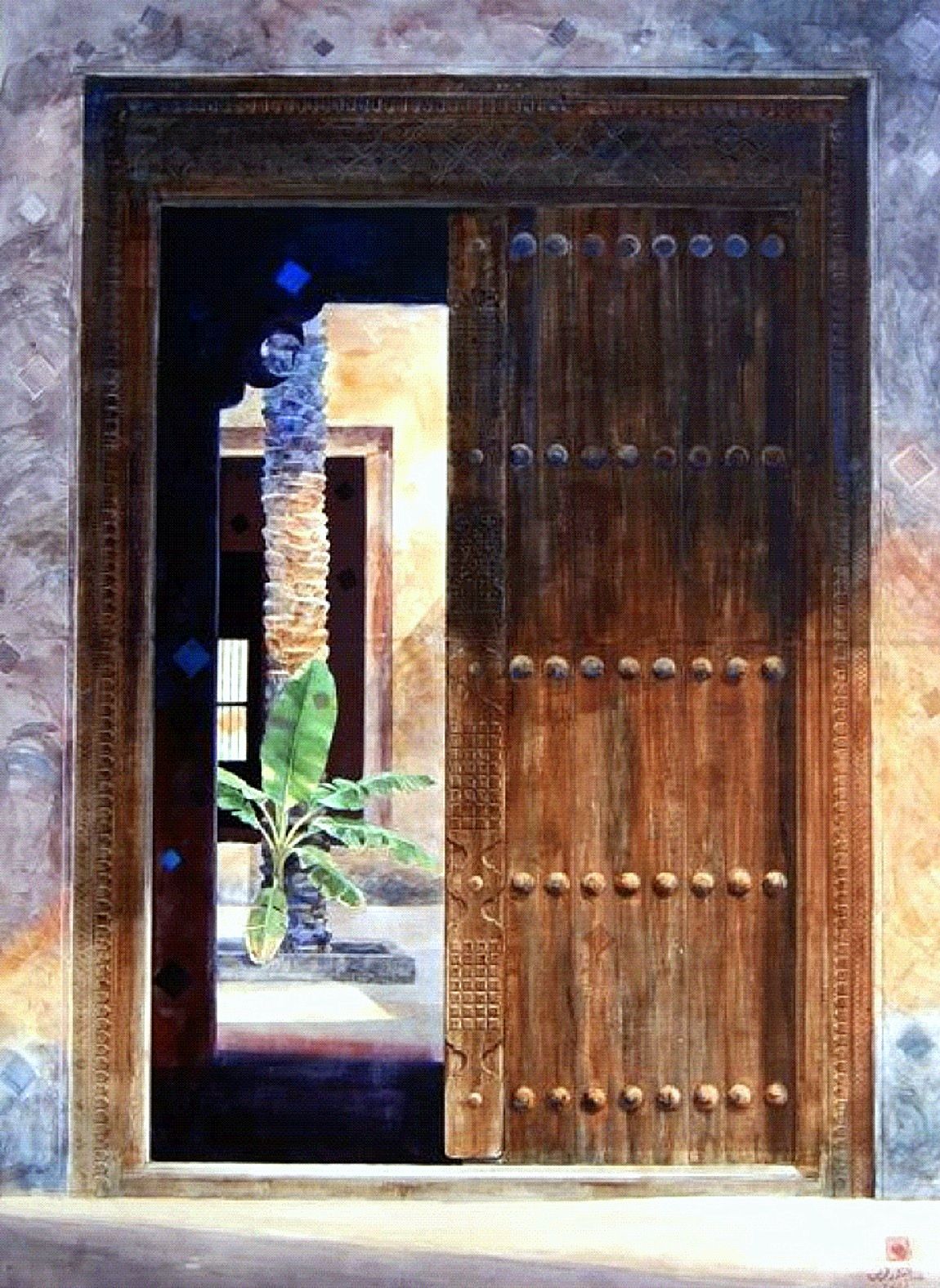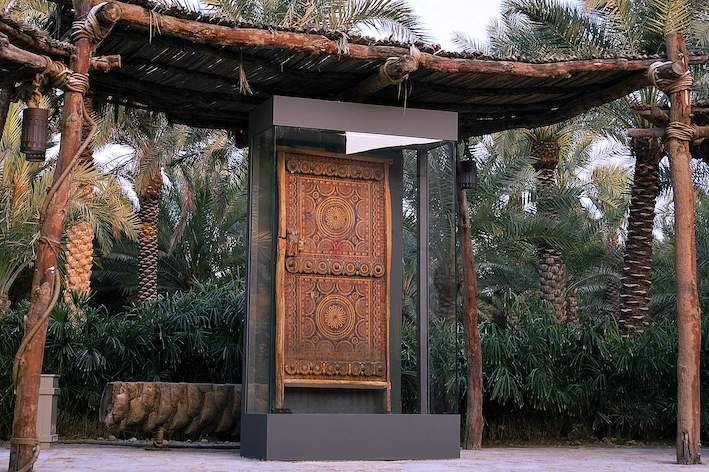When Doors Spoke
Abha, May 1962. A carved door of a souq in Abha, the capital city of Asir Province. Courtesy of Aramco Archives.
As far back as one can imagine, there has always been some form of barrier or another to protect us from outside forces (such as weather, or strangers), or to simply provide a sense of privacy.
Be it doors, fences, walls, or even nets, the sense of ‘here’ versus ‘there, ‘access’ versus ‘no access,’ and ‘inside’ versus ‘outside’, creates interesting psychological dynamics of feeling protected versus feeling exposed to others and to the elements.
Here, we are privileged to go back in time and explore the various types of doors created and designed to stand out and be identified, as well as keep places safe and guarded against theft and exposure. From carved wood to metallic mesh, the styles may have changed over the years, but their sole purpose remains the same - a gate that is both a barrier and a pathway between two places.

Jubail, 1930s. Doorway of an Aramco office building. Courtesy of Aramco Archives.

Khobar, February 1954. A decorative doorway and carved wooden door of a private house in Khobar. Courtesy of Aramco Archives.
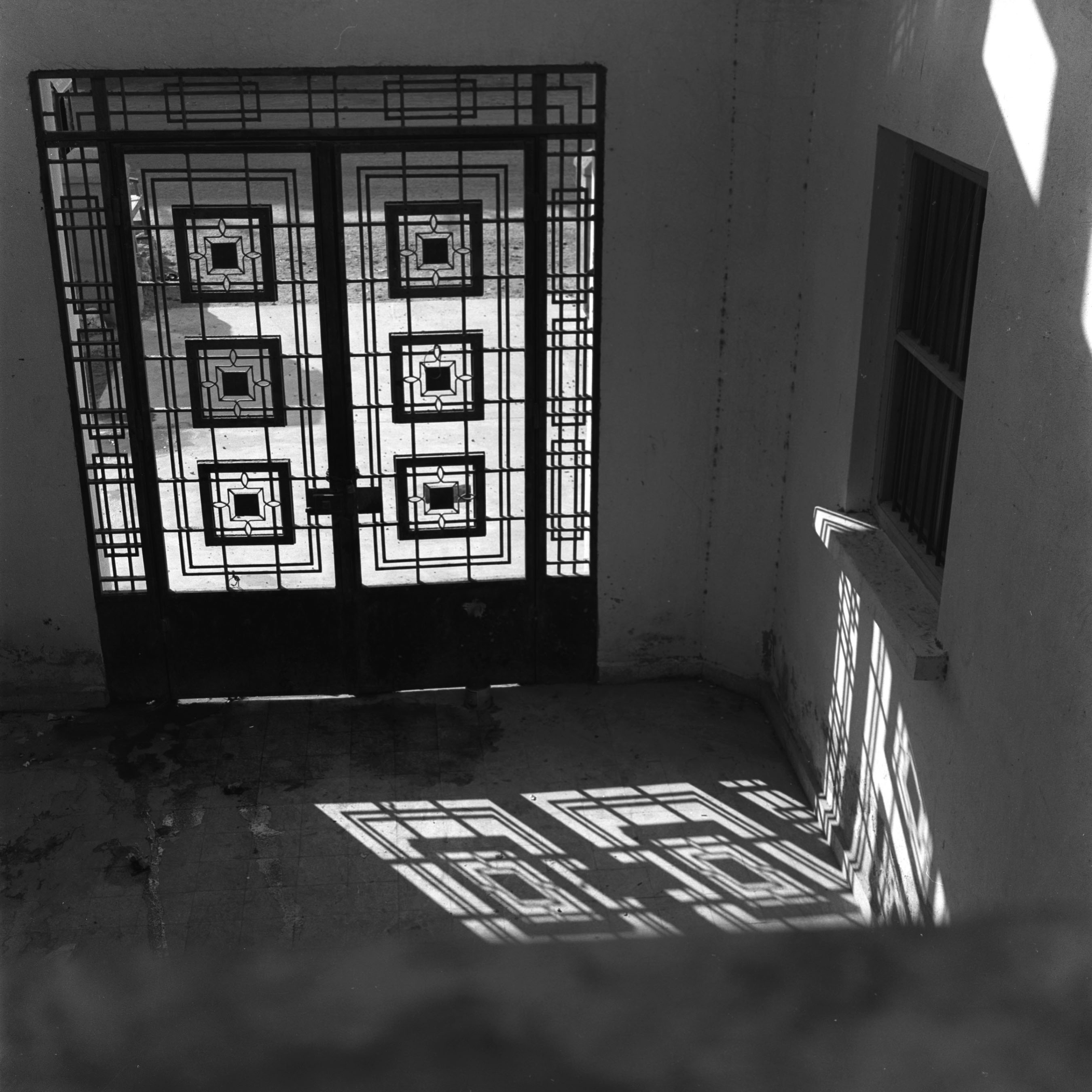
Jiddah, March 1954. Ornate ironwork decorates the entry door in the new Ministry of Finance building in Jeddah. Courtesy of Aramco Archives.

Hofuf, April 1957. Typical doorway at Hofuf, showing details of carved wood and molded plaster. Courtesy of Aramco Archives.
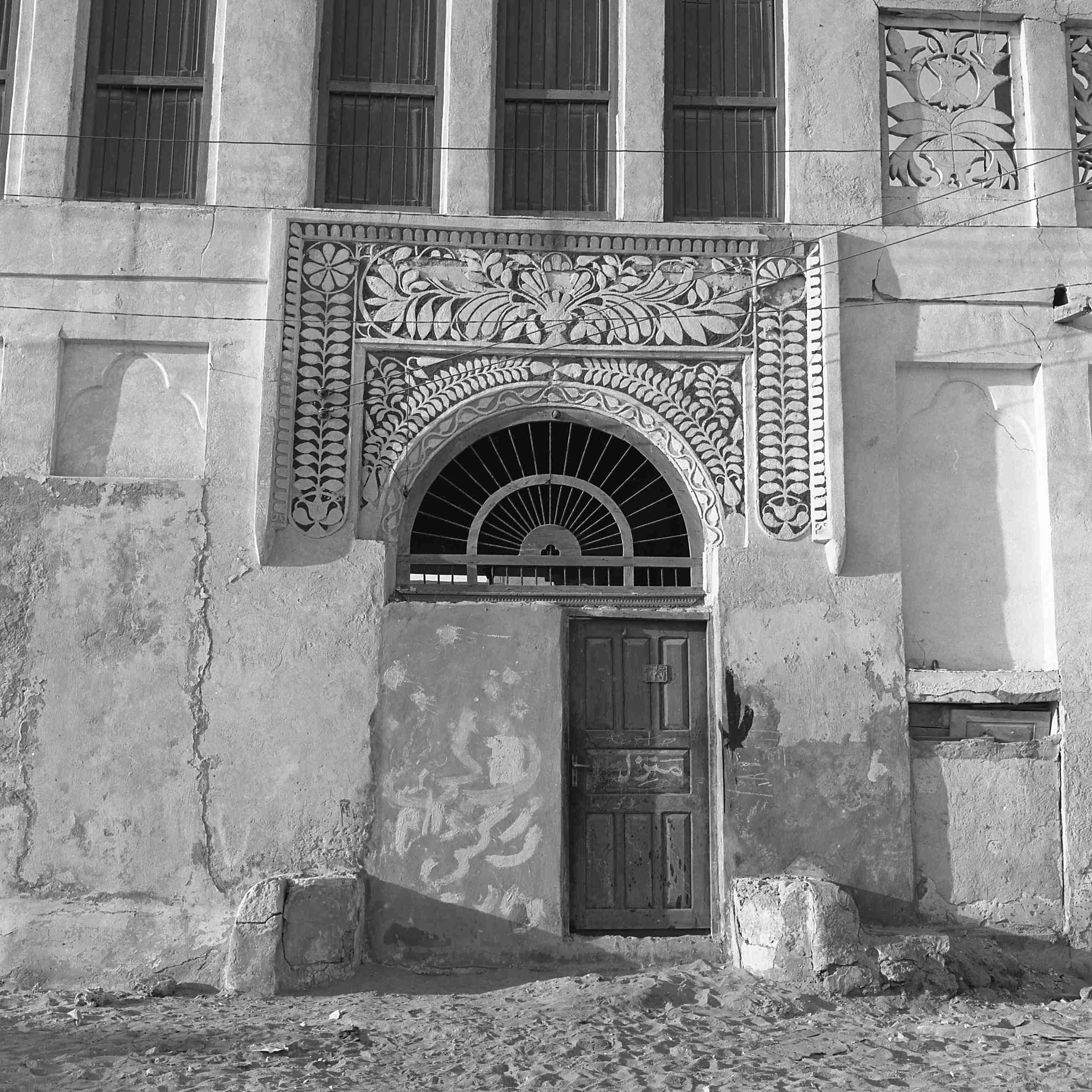
Dammam. 1953. Door of a building in Dammam. Courtesy of Aramco Archives.
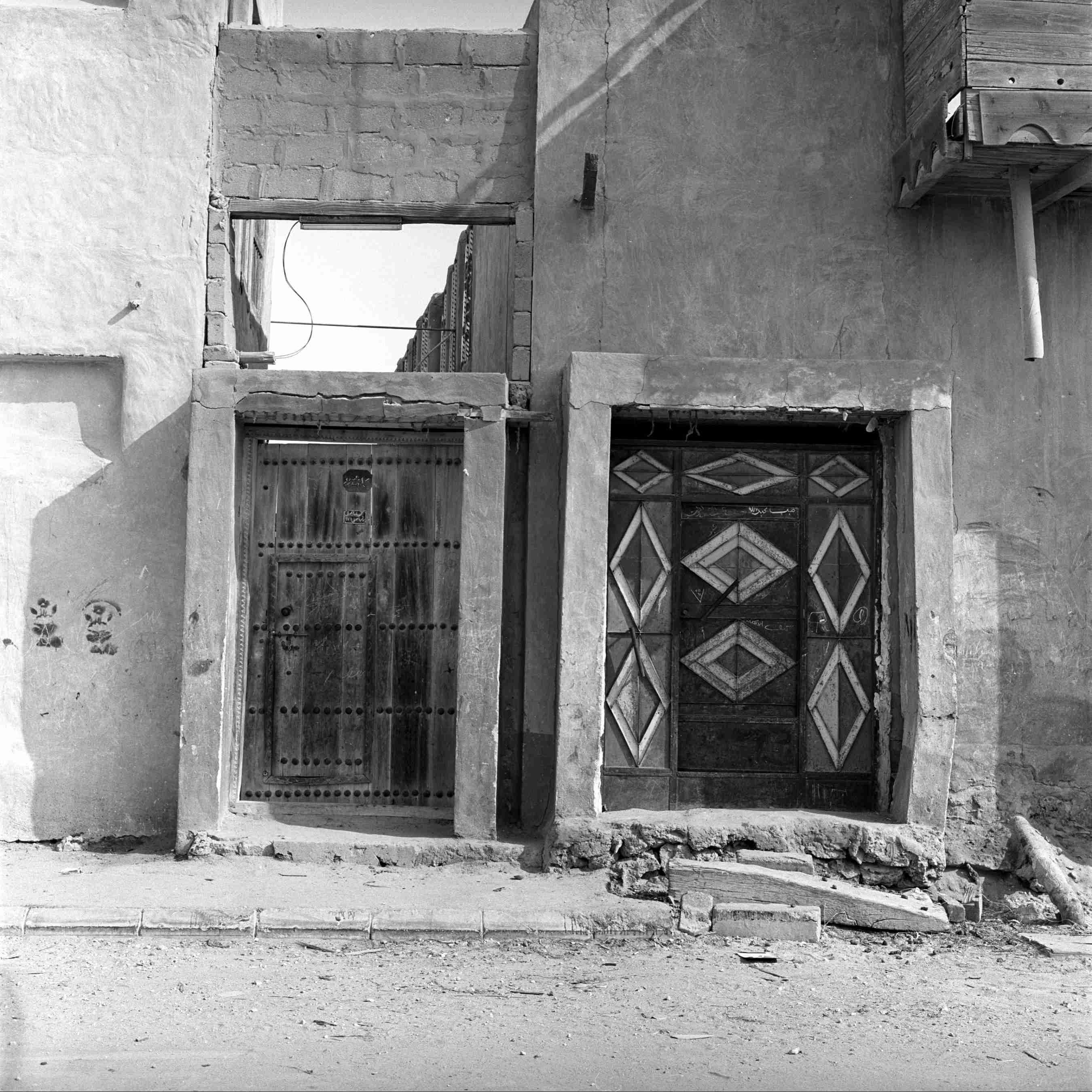
Jubail, 1976. Two houses’ doors. Courtesy of Aramco Archives.
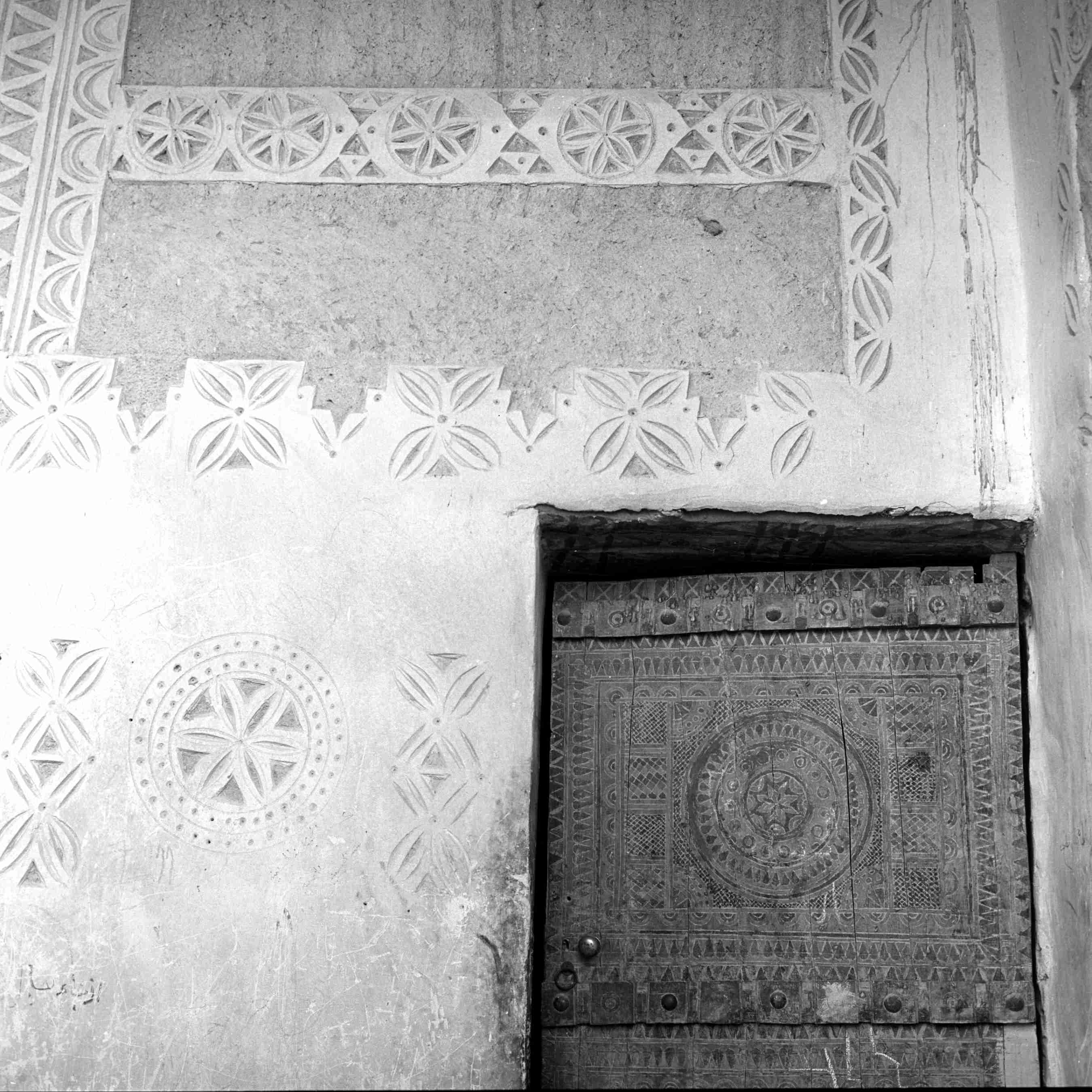
Undated. A view of a building wall and its door. Location unknown.
Courtesy of Aramco Archives.
